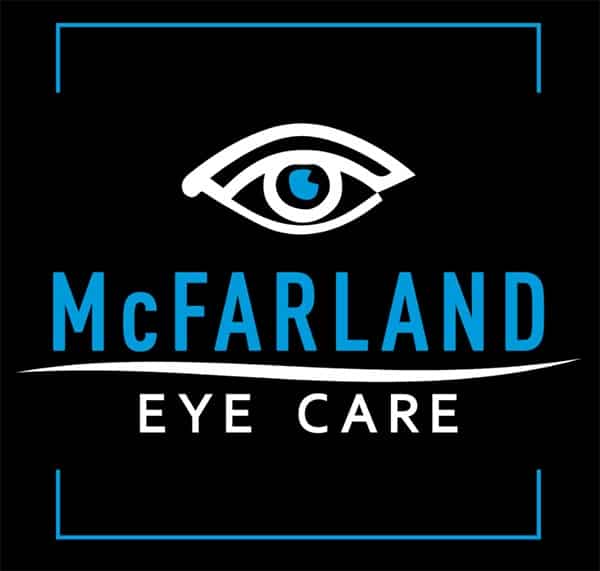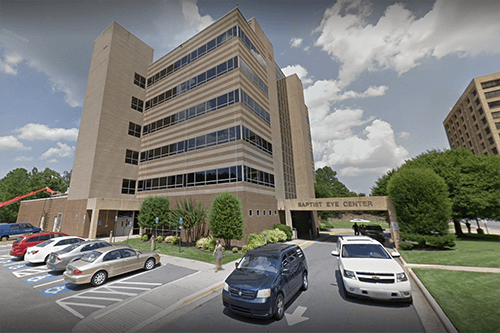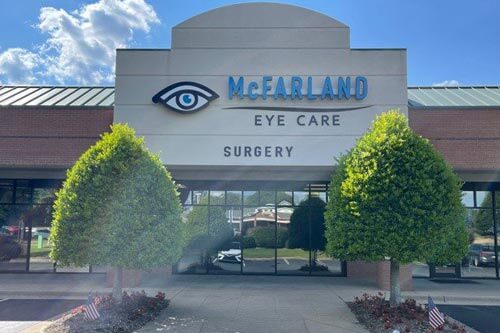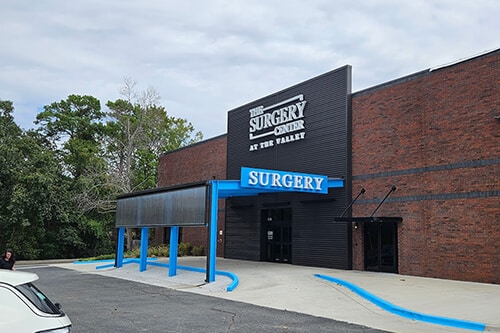Functional Oculofacial Procedures
Welcome to our dedicated page on Functional Oculofacial Procedures, where we bridge the gap between aesthetics and the essential function of the eye and its surrounding structures. In the realm of oculofacial plastic surgery, the focus isn’t solely on enhancing appearance; it’s equally about restoring, improving, or maintaining the vital functions that contribute to your overall eye health and vision quality. Dr. Byron Wilkes specializes in procedures that are designed to address a range of conditions – from eyelid malpositions like ptosis (drooping eyelids), entropion, and ectropion, to tear duct obstructions and orbital disorders. Whether you’re seeking relief from discomfort, aiming to protect your vision, or looking to resolve issues that affect both your appearance and ocular function, Dr. Wilkes is committed to providing tailored solutions that meet your needs.
Excessive tearing may result from a number of causes. A thorough examination will allow Dr. Wilkes to determine a course of treatment to minimize the tearing. There are a variety of surgical procedures that may be recommended to reduce tearing. These may include ectropion repair, punctoplasty, probing and irrigation with crawford tube placement, or DCR.
Possible Solution: DCR
Dacryocystorhinostomy (also known as DCR) is a treatment for a blocked tear duct. During a DCR procedure, Dr. Wilkes creates a new opening from the lacrimal sac to the nasal cavity using a small incision near the inner corner of the eye on the affected side. A small tube will be left in place following surgery to keep the new pathway open. These tubes are kept in place for 4-6 weeks for most patients. These tubes will be removed in clinic with a topical numbing drop, removal is quick and relatively painless.
Possible Solution: Ectropion
An ectropion procedure is a surgical correction of lower eyelid laxity that causes the eyelids to turn outward away from the eye’s surface. This can lead to an increase in tearing because it interrupts the tears natural flow into the lacrimal system. During this procedure, Dr. Wilkes will surgically “tighten” the lower eyelid to ensure they rest in their normal anatomical position against the surface of the eye. In many cases, an ectropion procedure is performed in conjunction with a punctoplasty procedure. A punctoplasty procedure is a small “one- snip” procedure that opens up the puncta, which is the opening of the lacrimal system on the surface of the eyelid. This also helps with tear products and works to combat dry eye.
Possible Solution: Probe and Stent Irrigation
During this procedure, Dr. Wilkes will use a special tool to open the lacrimal system. He will place a stent, which is a small silicone tube, into the system. This will remain in place for 4-6 weeks for most patients. Removal of these tubes is done in clinic, using a topical numbing drop. The stent enables the correct flow of the body’s own lubrication.
Thyroid eye disease (TED) is an autoimmune condition where the immune system mistakenly attacks the tissues around the eyes. It’s commonly associated with an overactive thyroid (hyperthyroidism) due to Graves’ disease, but it can occur with normal thyroid function or even with an underactive thyroid. Symptoms may include bulging eyes, double vision, eye pain, dryness, redness, and difficulty closing the eyes completely.
Possible Solution: Regular Medical Checkups with Non-Invasive Options
For most patients, conservative measures are all that is needed to keep Thyroid Eye Diseases from permanently affecting their vision. In some cases, Dr. Wilkes may recommend a medication administered via IV infusions to help control the symptoms of Thyroid Eye Disease. If you have Thyroid Eye Disease, regular medical checkups are extremely important. Those appointments will allow Dr. Wilkes to monitor your disease and work to protect your vision and minimize your symptoms.
Possible Solution: Orbital Decompression
Orbital decompression surgery is a procedure that is performed to relieve pressure on the eye(s) caused by Thyroid Eye Disease (TED). It is often done to alleviate symptoms such as bulging eyes (proptosis), and double vision that can result from expansion of the eye socket due to tissue inflammation and swelling. During an Orbital Decompression procedure, Dr. Wilkes creates more space for the eye(s) to move freely which also reduces pressure on the optic nerve. Dr. Wilkes will discuss potential risks and benefits with all patients prior to deciding if this surgery will be a beneficial treatment for TED.
Possible Solution: Extraction and/or Reconstruction
Dr. Wilkes also addresses any abnormal growths that can occur in the area around the eyes. A thorough examination of the size, location, type of lesion, and symptoms caused by the lesion will be performed prior to Dr. Wilkes making his recommendation for treatment. Often, smaller lesions can be removed and biopsied, if necessary, in the clinic setting using local anesthetic. If a lesion is larger, or the location makes removal more complex, Dr. Wilkes may recommend removal in the operating room under local anesthetic and sedation. Dr. Wilkes will discuss the surgical plan and any potential reconstruction required with the patient before surgery.
Possible Solution: Surgical or Non-Surgical Care
Orbital fractures can result from accidents, falls, and/or physical assaults and can result in symptoms such as pain with eye movement, double vision, swelling, bruising, and changes in vision. Treatment of orbital fractures depends on the severity and location of the injury, as well as the associated symptoms. For minor fractures, close observation may be all that is required. Some fractures can heal properly without intervention and not cause any further complications.
Dr. Wilkes may determine that surgical intervention is required if the fractures are severe or complex, particularly when there is significant displacement of bone fragments, entrapment of soft tissues, or compromised vision. Dr. Wilkes will review the symptoms, perform a thorough assessment, and review any imaging of the area to formulate the proper plan of care.






